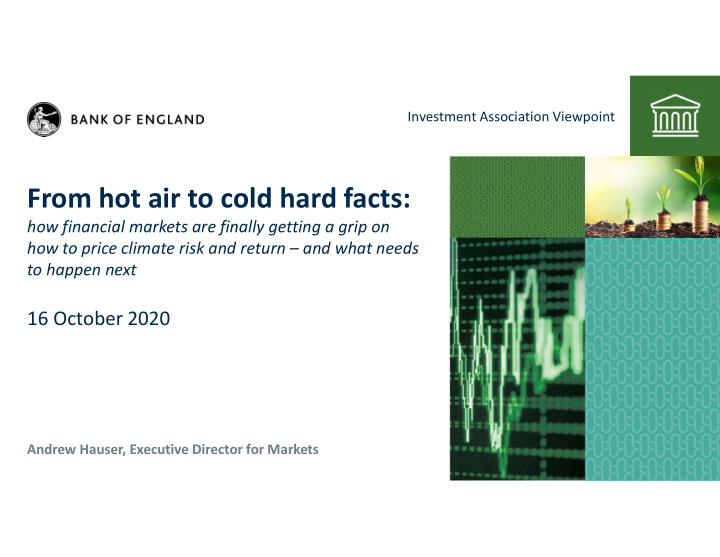



Investment Association Viewpoint From hot air to cold hard facts: how financial markets are finally getting a grip on how to price climate risk and return – and what needs to happen next 16 October 2020 Andrew Hauser, Executive Director for Markets
Excess returns of green equity & bond indices vs market-wide benchmarks 2
Potential economic benefits of disclosing climate metrics (and costs of not) 3
TCFD-aligned disclosures 4
Correlations between environmental scores from different rating providers Key Each matrix displays correlation coefficients between Environmental ratings given by five rating providers (labelled P1 – P5 in the charts) on a sample of 924 firms (2017 data). Right: Correlation coefficients between aggregate Environmental ratings. Below : Correlation coefficients between ratings of a selection of more granular environmental categories. Greenhouse Gas Emissions Energy Green Buildings P1 P1 P1 P2 0.25 P2 0.40 P2 n/a P3 n/a n/a P3 0.22 0.19 P3 0.22 n/a P4 0.28 0.47 n/a P4 0.26 0.33 0.02 P4 0.19 n/a 0.18 P5 n/a n/a n/a n/a P5 0.37 0.05 0.17 0.36 P5 0.55 n/a 0.34 0.34 P1 P2 P3 P4 P5 P1 P2 P3 P4 P5 P1 P2 P3 P4 P5 5
Alternative warming potential Estimate of APF corporate holdings ‘portfolio warming metrics for same portfolio potential’ 6
A selection of ‘green bond’ structures 7
Corporate green bonds outstanding Total green bond issuance by nationality of issuer 8
New issue premia for non-financial Currency composition of bonds by European-issued € bonds (Sep 2020) UK domiciled issuers (excluding gilts) 9
Sovereign green bonds in issue Dutch green corporate bonds 10
Number of launches of new AUM and flows into sustainability-rated ‘climate aware’ funds open ended funds 11
ESG integration Source: CFA Institute 12
Climate-based asset allocation strategies 13
Recommend
More recommend